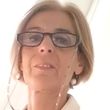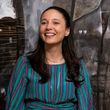Social Inclusion
































































AI for Future



Innovation Showcase
This stage, powered by SAP on the 13th of June, showcases products and services presented by startups, SMEs, and companies offering innovative solutions to corporate needs and, generally, the market.


Google Innovations
The stage presents the latest trends and innovations in the Google ecosystem. Featuring international speakers and experts in the field, we will explore the dynamics of YouTube, Analytics, Performance Max, and GitHub/Scripts to harness the full potential of Google platforms for your digital success.Future of Open Innovation & VC
Embark on a journey to explore the characteristics of a global community of innovators committed to co-designing inclusive prosperity and a better future. Through immersion in diverse ecosystems and approaches, participants will gain valuable insights into the dynamics of open innovation and collaboration on a global scale. Together, we will cultivate a community of changemakers dedicated to shaping a more equitable and sustainable world for generations to comeAI Marketing
The AI Marketing stage, part of WMF's AI Global Summit and sponsored by Get Response, offers talks on the application of marketing in the field of artificial intelligence and insights on AI from top Italian and international industry experts.
Prophets of AI
In this stage, speeches and interventions by some of the most respected international experts in Artificial Intelligence will alternate.
Thanks to the partnership between Search On Media Group and WMF with Prophets of AI - a leading American entity for connecting with experts in the AI field - this stage will feature brilliant minds who have made significant contributions to the advancement of artificial intelligence, robotics, and consciousness fields, coming from diverse backgrounds such as computer science, art, finance, and informatics.
Masterclass
The WMF proposes a Masterclass dedicated to the deepening of some hot topics for the AI & Digital-Tech sector through which it will be possible to understand the strategic use of Artificial Intelligence. The Masterclass will last two hours, in which it will be possible to relate with some of the leading experts in the field and are intended for a maximum of 25 people, to ensure the best possible interaction with the speakers.E-Commerce
The stage, within the E-commerce Fest and sponsored by Connecteed, is dedicated to the main strategies for optimizing online sales: the biggest innovations in the world of digital marketing and the most interesting integrations will be presented by leading industry profiles.

Advertising
The stage, powered by SMConnect, is the ideal place to discover new trends and best practices in digital advertising. Industry experts will provide insightful insights into the latest technologies and tools to help companies optimize their advertising campaigns and increase their ROI.

Brand
The stage hosts prominent speakers that will offer their insights into the world of branding: through informative and vertical interventions, the strategic role of brands in the digital age, their relationship with consumers, impact on the social context, vertical platforms, communities, and much more will be thoroughly explored.SEO


Social Media Strategies
The stage, powered by SMStrategies, offers informative speeches dedicated to fundamental strategies for measuring and optimizing performance on social media. You will delve into the most effective techniques to maximize the impact of your online activities, optimizing your social media presence to achieve your business goals.


Mainstage
This is the biggest stage of the WMF that brings together all the themes of the Festival, where tech experts and innovators share their ideas and visions.
Inspirational talks, interviews, and debates will take place on the Mainstage to explore the latest technological developments and different aspects of innovation and its ethical, social and economic implications.
Not only creative insights and reflections on the Future but also moments of show and entertainment with concerts, live performances, the Startup Competition Final and award ceremonies with the WMF Awards.
Book Presentation
The stage, part of the Book Fair at WMF, is dedicated to talks, book presentations, and interviews on the major developments in the publishing sector. Authors will discuss topics related to digital, sustainability, innovation, and social impact.


Tech Policies and Communities
This stage is part of GovTech Summit: the event on innovation in global policies, a meeting point to explore the synergies between technology, governance, and innovation.


WorkTech Policies


AI Tools & Services
In this stage, speakers will examine how the corporate use of artificial intelligence can automate processes and improve overall performanceInfluencer Marketing
The stage, powered by SMStrategies, explores the world of digital influencers, delving into winning strategies for collaborating with influencers and identifying the best partnership opportunities, as well as creating engaging content that captures the attention of the target audience.
Italy, EU and Global Diplomacy
This stage is part of the GovTech Summit: the event on innovation in global policies, a meeting point to explore the synergies between technology, governance, and innovation.

Content Creators
The stage, part of WMF's Creators Fest, is where the world of Content Creators comes to life with interviews, sketches, panels, talks, and meetings with the protagonists of the content creation world and their communities.
Startup Stage
Every year at the WMF, all the players in the innovation ecosystem come together: meet the founders of the selected startups, who will be able to present their project to an international audience of potential investors, partners and media, and join the WMF's international network, thus accelerating the opportunities for success.Edutech
The Edutech Stage provides a comprehensive overview of the latest frontiers in educational technology. Through a series of engaging and informative speeches, industry experts will explore the potentials, challenges, and innovative applications that are transforming the way we learn and teachEthics & AI
The stage dedicated to Ethics and Artificial Intelligence explores the latest trends, innovative applications, and future perspectives in the field of AI and ethics. Experts from around the world converge to discuss the ethical challenges and opportunities offered by AI, promoting collaboration and innovation, presenting a crossroads of ideas and perspectives that shape the future of ethics and AI in the digital age.Digital Tools & Services
Work, HR & Digital Skills
The stage dedicated to the world of work delves into the challenges and opportunities in the realm of human resources and digital skills. Experts and HR managers from various national and international backgrounds will share valuable insights on emerging trends and possible future scenarios in the workplace context.Climate Change
On this stage, researchers, consultants, and non-profit organizations will take turns presenting the state of the art and the major implications of climate change, focusing on existing solutions and key trends at both national and global levelsData Analytics
The stage, sponsored by Exelab, is dedicated to web data measurement, collection, and analysis processes aimed at optimizing their utilization. The speeches will examine the new tools in the field and the latest trends to improve campaign reporting.
Knowledge Share
Voices and testimonies of innovation will take center stage at the Open Stage by Netval and Knowledge Share at WMF! On June 14th, 2024, get ready to dive into deep tech and technology transfer.
Not only will Netval and KS be present as partners, with an Expo Area featuring 40 of the most promising startups from the KS 2.0 platform and the national innovation landscape, but they will also bring best practices and industry professional viewpoints!
We'll delve into deep tech topics with a focus on the world of Start-Ups and Technology Transfer. But it won't be just theory: on stage, authoritative experts and pioneers will share experiences and concrete examples of the disruptive potential of deep tech in shaping our future.
Netval and Knowledge Share are not just present; they are the engines driving this extraordinary journey into innovation. Join us as we transform the event into an unforgettable experience, creating deep connections and opening the doors to a world of possibilities.
Don't miss the opportunity to be part of this revolution: mark June 14th on your calendars and get ready to be transported to the forefront of global innovation.
Come discover the future with us at the Open Stage by Netval and Knowledge Share at WMF.
For more information about Associazione Netval: Who We Are - Netval

Marketing Automation
The stage offers a series of presentations by various speakers on the topic of Marketing Automation, aimed at illustrating how it transforms the way companies interact with their customers, enabling personalized and timely communication.
This stage is only accessible with a Full Ticket.
Social Inclusion
During this stage, we will discuss with experts, academics, and activists how to promote the growth of a more inclusive environment by eliminating structural prejudices and recognizing, instead, the true value of diversity.Augmented & Virtual Reality
The stage, featuring prominent international speakers in the field, will explore the latest trends, innovative applications and future prospects of Augmented and Virtual Reality, delving into how these technologies are transforming industries such as gaming, education, design and more.
Tech 4 Business
Generative AI
The proposed stage, sponsored by Telematic International University Uninettuno, provides the opportunity to immerse oneself, through various speeches, in the world of Generative AI, a rapidly growing field that combines artificial intelligence and creativity.
Future of Entrepreneurship
In this stage you will be inspired by stories of entrepreneurial successes, by the efficient and creative use of today's digital tools, and by visions of the future!WMF Off
The stage hosts round tables, debates, and the Festival's community coming together to discuss topics that have always been close to the heart of WMF. Discussions will therefore alternate between newsletters, new digital scenarios, and trends in the technology sector.
Digital Commerce & Marketing Services
In this stage, speakers will discuss strategies and tools to help companies succeed in e-commerce, including tips for increasing sales, optimizing user experience, and using effective marketing techniques.Digital Strategy
The stage will offer case studies and working models, marketing and communication with informative and vertical talks to develop successful digital strategies and explore the most effective planning to tackle the challenges of the contemporary market.This stage is only accessible with a Full Ticket.
Machine Learning
The stage offers insightful and focused talks on the latest trends in computer programming. Participants will have the opportunity to delve deep into the vast universe of software development, gaining essential skills to tackle complex challenges and craft innovative solutions.Human Rights
The stage explores, with the participation of leading international speakers, the crucial issues that define the global human rights agenda. We will delve into current issues, new challenges and best practices for promoting and defending human rights around the world, providing a global and interdisciplinary perspective on a critically important topic.Content Marketing
AI for Health
The AI for Health stage, powered by the GIMBE Foundation, offers a unique opportunity to explore the application of artificial intelligence in healthcare. You will be involved in the study of best practices and winning strategies for using artificial intelligence to improve people's health and well-being.
Sustainability & Tech
The stage offers, through interventions by various international and non-international speakers, insights into the theme of sustainability and technology. Participants will focus on how technological innovation can currently drive the transition towards a more sustainable world.
TikTok
This stage, sponsored by TikTok Italy, explores the creative and technical dynamics of the platform. Training sessions, case studies and best practices to better elaborate strategies on TikTok.
Tech for No Profit
The stage dedicated to the Third Sector: non-profit organizations, institutions, volunteers, and experts offer informative speeches on the latest innovations and trends aimed at promoting actions to support a more equitable and inclusive society.UX & UI
The UX & UI stage, powered by Architecta, will immerse you in the world of user experience and user interface. Those who follow this stage will have the opportunity to explore and deepen best practices for designing engaging and intuitive digital experiences.
Impact to Business
The program of this open stage will help you understand how to co-design a sustainable, inclusive and scalable model of prosperity and increase the positive impact of initiatives born to respond locally to global challenges on your community and the environment around you.Coding Front-end
Back-End & Cloud
The stage provides comprehensive and targeted discussions on the latest trends and strategies in backend development and cloud computing. Attendees will delve deep into crucial aspects of server-side programming and cloud infrastructure, acquiring vital skills to address intricate challenges and engineer innovative solutions tailored to modern computing environments.E-Sports & Gaming
This stage hosts discussions on the present and future of the gaming and eSports businessTourism
The stage provides training sessions on innovations in the tourism sector and digital integrations to optimize offerings in an international marketCybersecurity
On this stage, experts address the increasingly fundamental topic of Cybersecurity with informative and specialized speeches.Space Economy
Video Marketing
On this stage, the world of video marketing will be explored through expert interventions that explain how to use videos to promote a product, a service, or an idea, increasing engagement and involving the target audience.


Environmental Transformation
This stage is part of the GovTech Summit: the event on innovation in global policies, a meeting point to explore the synergies between technology, governance, and innovation.






There are no sessions in the selected stage on this day.
Televideo, the first technology to provide accessibility: still young after 40 years


Accessibility is learnt from an early age: Rai Accessibility and accessible projects with and for children


Right to accessible culture: how art can reach everyone



Accessible design: artefacts 4 all

Understanding How Algorithms are Negatively Impacting Women and why we should all care

Silver Generation and inclusion in cultural policies. A new dignity with the project “24”

LIS2Speech. Increasing accessibility for deaf people: opportunities and challenges of artificial intelligence


Chronicity, Illness, and Social Representation: Reflections from a Clinical Perspective


Glasses for the Blind & Pedestrian Autonomous Driving AI
Also, 500 Million EUR are spent for training just over 2,000 Guide Dogs each year, although there are more than 300 Million visually impaired individuals which could benefit from them.
Both costs have the same underlying issue: there is no Pedestrian Autonomous Driving AI which could automate these tasks, empower people with disabilities, or reduce labour cost.
During this talk, we will discuss about technology solving these issues, and the personal story of founding the company that solves them.

